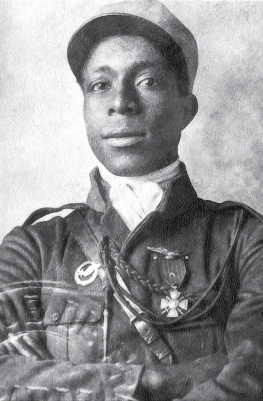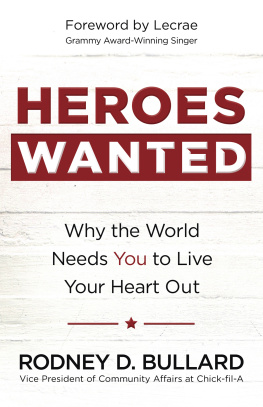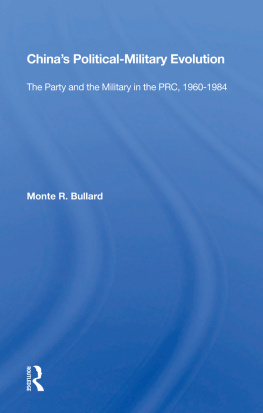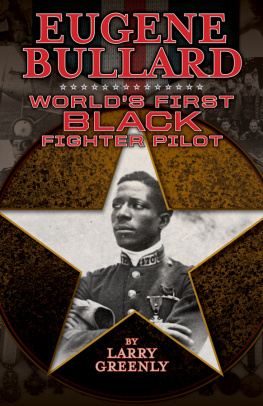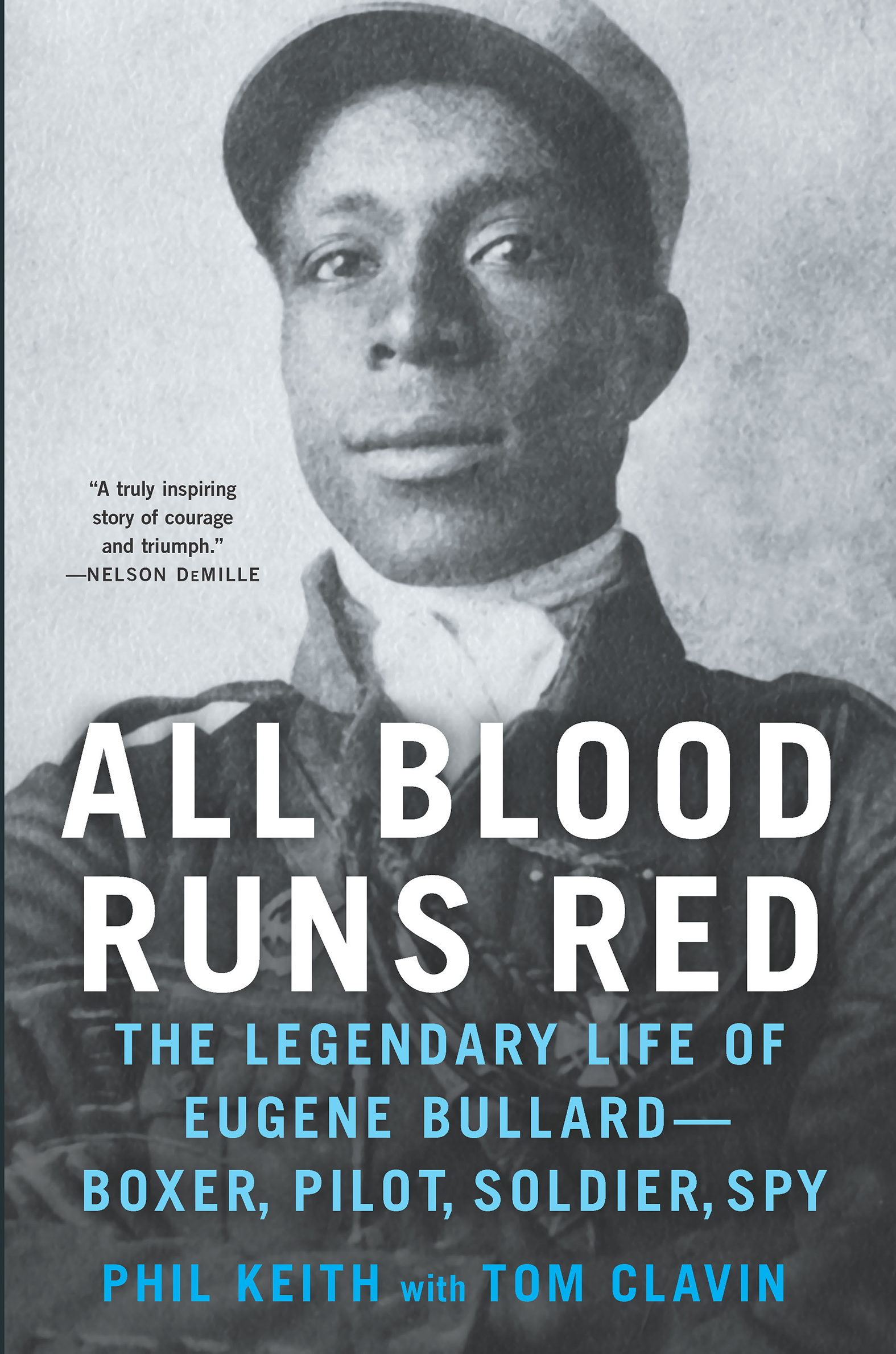
The incredible story of the first African American military pilot, who went on to become a Paris nightclub impresario, a spy in the French Resistance and an American civil rights pioneer
Eugene Bullard lived one of the most fascinating lives of the twentieth century. The son of a former slave and an indigenous Creek woman, Bullard fled home at the age of eleven to escape the racial hostility of his Georgia community. When his journey led him to Europe, he garnered worldwide fame as a boxer, and later as the first African American fighter pilot in history.
After the war, Bullard returned to Paris a celebrated hero. But little did he know that the dramatic, globe-spanning arc of his life had just begun.
All Blood Runs Red is the inspiring untold story of an American hero, a thought-provoking chronicle of the twentieth century and a portrait of a man who came from nothing and by his own courage, determination, gumption, intelligence and luck forged a legendary life.
Praise for All Blood Runs Red
An incredible, meticulously researched, star-studded tale of the grandson of a slave, who broke nearly every barrier he encountered, becoming historys first African American fighter pilot, a storied boxer, a member of Parisian high society in the Jazz Age, a character in a Hemingway novel, a World War II spy, and a friend to the likes of F. Scott Fitzgerald, Cole Porter, Josephine Baker, and Louis Armstrong. All Blood Runs Red is a true moveable feast that will forever change the way you see twentieth-century history.
Kristin Harmel, international bestselling author of The Winemakers Wife and The Room on Rue Amlie
Phil Keith and Tom Clavin have resurrected the memory of a man who was larger than life; a man born to a former slave and a Native American mother in racially hostile Georgia who refused to play the hand he was dealt, and lived life on his own terms. All Blood Runs Red should be required reading for anyone who has ever dreamed big. A truly inspiring and uplifting story of courage and triumph, and an opus for an unsung hero.
Nelson DeMille
An exultant trumpet song to the human spirit. My God, how I admire this man.
Robert Coram, author of Boyd: The Fighter Pilot Who Changed the Art of War
Eugene Bullard lived enough for a dozen interesting men, and All Blood Runs Red tells his story in a captivating way that keeps the pages turning for the next chapter. Keith and Clavin bring us a well-crafted book about a truly admirable American.
Gregory A. Freeman, author of The Forgotten 500: The Untold Story of the Men Who Risked All for the Greatest Rescue Mission of World War II
Phil Keith is the author of six books, including Blackhorse Riders, which won the 2012 USA Best Book Award for Military History, was a finalist for the 2013 Colby Award and earned a 2013 silver medal from the Military Writers Society of America. He holds a degree in history from Harvard and is a former navy aviator. During three tours in Vietnam, he served with distinction and was awarded, among other decorations, the Purple Heart, Air Medal, Presidential Unit Citation and the Navy Commendation Medal.
Tom Clavin is the author of eighteen nonfiction books and has worked as a newspaper and website editor, magazine writer, TV and radio commentator, and reporter for the New York Times covering entertainment, sports and the environment. His latest book, Dodge City, became an immediate New York Times bestseller. Three previous books have also been New York Times bestsellers: The Heart of Everything That Is,The Last Stand of Fox Company and Halseys Typhoon.
Also by Phil Keith
Settling Up
America and the Great War
Stay the Rising Sun: The True Story of USS Lexington, Her Valiant Crew, and Changing the Course of WWII
Fire Base Illingworth: An Epic True Story of Remarkable Courage Against Staggering Odds
Missed Signals
Blackhorse Riders: A Desperate Last Stand, an Extraordinary Rescue Mission, and the Vietnam Battle America Forgot
Crimson Valor
Belladonna
Animus
Also by Tom Clavin
Wild Bill: The True Story of the American Frontiers First Gunfighter
Valley Forge (with Bob Drury)
Dodge City: Wyatt Earp, Bat Masterson, and the Wickedest Town in the American West
Being Ted Williams: Growing Up with a Baseball Idol (with Dick Enberg)
Lucky 666: The Impossible Mission (with Bob Drury)
Reckless: The Racehorse Who Became a Marine Corps Hero
The Heart of Everything That Is: The Untold Story of Red Cloud, An American Legend (with Bob Drury)
The DiMaggios: Three Brothers, Their Passion for Baseball, Their Pursuit of the American Dream
Gil Hodges: The Brooklyn Bums, the Miracle Mets, and the Extraordinary Life of a Baseball Legend (with Danny Peary)
Last Men Out: The True Story of Americas Heroic Final Hours in Vietnam (with Bob Drury)
One for the Ages: Jack Nicklaus and the 1986 Masters
Roger Maris: Baseballs Reluctant Hero (with Danny Peary)
All Blood Runs Red
The Legendary Life of Eugene BullardBoxer, Pilot, Soldier, Spy
Phil Keith with Tom Clavin

To Lolly, the Muse, who has always believed; so, therefore, I write. And to Pierce, for whom I write, for his legacy and mine.
P.K.
To Bob and AnnEllen Rosen
T.C.
Contents
PROLOGUE
On November 17, 1917, historys first African American fighter pilot, Corporal Eugene Bullard of the 85th Pursuit Squadron, Lafayette Flying Corps, scored, in all likelihood, his first aerial victory. In so doing, however, he had a terrifying clash with a Grim Reaper, painted all in black, equally determined to rip his fragile craft from the skies above the Western Front and fling it, engulfed in fire, to the mud-churned earth below.
Heres how that fateful flight began: flying opportunities had been few and far between during the previous two weeks. On the cusp of winter, the days were often cold with windswept skies and pelting rain. It was virtually impossible to conduct combat sorties in anything but clear skies considering the exposed cockpits and severe airframe limitations of the early flying machines. The seventeenth, however, had dawned bright and clearalthough it remained decidedly chilly.
At dawn, the barracks steward raced through the rooms shaking pilots out of their deep slumbersor, in some cases, hangovers. The commandant had deemed it a day fit for missions. Bullard had been sound asleep but jumped up quickly, already fully dressed. This was not unusual, since many of the pilots slept in their flying gear when they were on duty. It saved precious minutes toward getting aloft.
As Bullard remembered, There was no breakfast in those days. No meals were served until after eleven. If a pilot had a morning mission, it was hot coffee, then off to the field.
Bullard raced to the flight line where Sergeant Viel, his mechanic, had his SPAD VII warmed up, prop spinning, ready to fly. He quickly scanned the cockpit and the big Vickers guns with which his aircraft was armed. All seemed to be in order.
A group of fourteen planes was soon in the air, headed for the German lines, which that day would be the contested turf around Metz. Jimmy, Bullards usual copilot, a feisty and fearless capuchin monkey, was not along for this ride. The little bugger was aggravated by a sniffling cold, so Bullard had left him in the care of fellow aviators back at the base. It was Jimmys lucky day.
At a little more than 3,000 feet, it was desperately frigid. Even Bullards fur-lined boots were insufficient to keep his feet from becoming numb. This was a significant danger for the pilots in that frozen extremities could be a hindrance to working the rudder pedals in a dogfight. Many early aviators suffered from frostbite and blackened or even lost toes were not uncommon.
Next page
